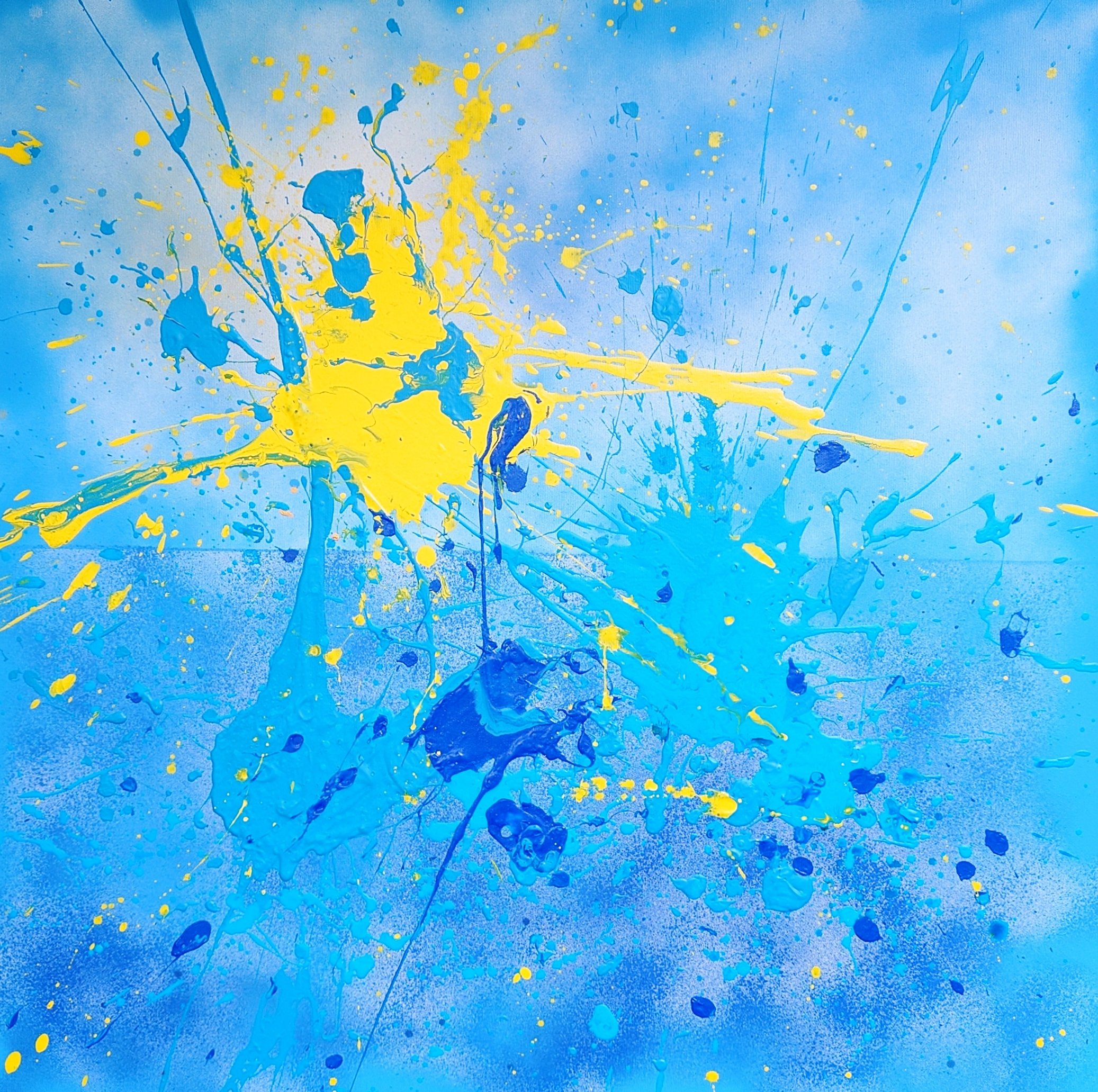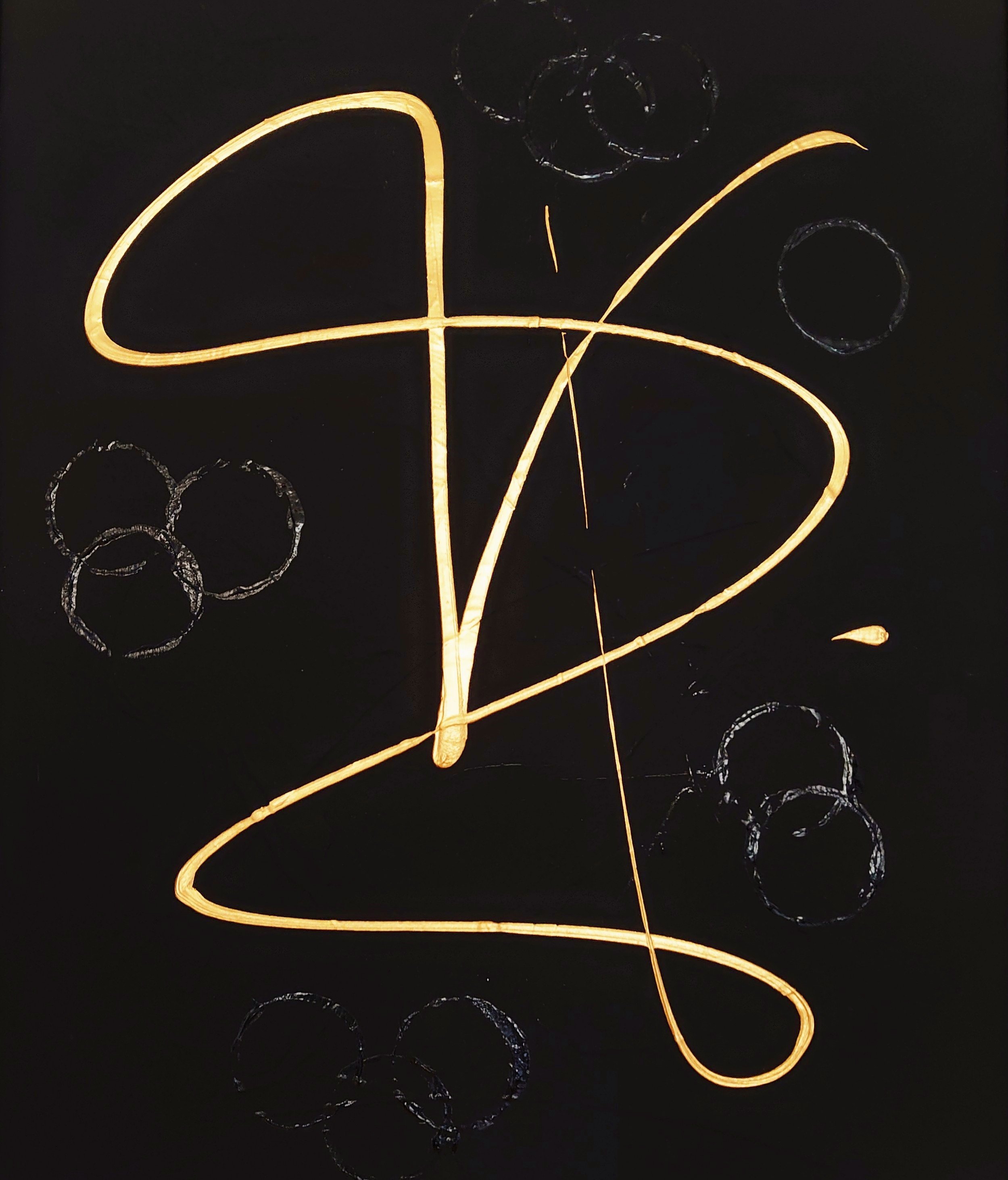Petra Dippold-Goetz
Echoes of Freedom: The Art and Activism of Petra Dippold-Goetz
Petra Dippold-Goetz’s work speaks through textures and tones that seem to echo with the memories of their material origins and the aspirations of her vision as an artist. Her art is an impassioned dialogue between beauty and warning, between celebration and critique, and it resonates with the contemporary crises and freedoms that define our age. In her work, Petra Dippold-Goetz channels the spirit of Friedrich Schiller’s maxim that "Art is a daughter of freedom," using her pieces to explore both liberation and responsibility.
Her use of mixed media is itself a testament to this ethos. Each material in her compositions, from sand and wood to recycled plastic and other discarded fragments, carries with it a layered story, a small fragment of reality brought to the surface. In “Caruso - Trash Art,” the contrast between the roughness of burlap and the vivacious strokes of red and orange paint suggests both the beauty and degradation of materiality. The visual tension that this creates—a robust, almost industrial aesthetic softened by her artistic touch—invites viewers to contemplate their relationship with the material world. The stamped lettering, “CARUSO” and “LOT 12/426,” adds a cryptic yet documentary quality, as if the piece were a fragment from a discarded industrial relic, repurposed to reveal a message about consumption and neglect.
Petra Dippold-Goetz’s socio-political concerns extend beyond environmental critique, becoming deeply personal and visceral in the textures of her “trash art” pieces. In works such as “On the Other Side of the Moon - Trash Art,” she delves into abstraction with a layered effect that feels lunar and mythic. The silvered, textured surface calls to mind not only lunar landscapes but the sterile, reflective veneer of humanity’s technological debris—the detritus of progress. The piece is emblematic of her ability to transform refuse into reverence, pulling together different types of waste to create an otherworldly and contemplative texture. There is a quiet, almost haunting beauty in this piece, as though it were the remains of an archaeological site, a monument to the things we cast off in the pursuit of progress.
In “The Bird of Golden Light,” Petra Dippold-Goetz moves into a minimalist, almost calligraphic style, combining black and gold on a dark canvas. Here, her strokes are fluid and intentional, evoking the graceful arcs of Japanese ink painting, yet imprinted with a distinctly modern and European sensibility. The gold streaks glow against the black, and their shape is suggestive of a bird in flight, a symbol of freedom and transcendence. This work feels less about warning and more about aspiration, capturing the artist’s capacity to wield simplicity in the service of grace. This is Petra Dippold-Goetz’s work at its most lyrical, where every brushstroke seems to possess a life of its own, drawing viewers into a hypnotic meditation on elegance and possibility.
“The Dance of the Whales” brings us back to Petra Dippold-Goetz’s jubilant celebration of life’s beauty. Splashes of blue and white spread across the canvas in undulating motions, creating a sense of movement akin to marine waves or the graceful dive of a whale through water. The explosive energy in the work is an ode to nature, a vivacious reminder of the ocean’s freedom. But beyond this surface celebration, there is an undertone of ecological lament, as if this joy might one day be lost if humanity’s destructive ways are not checked. Petra Dippold-Goetz manages to encapsulate both wonder and a call to awareness, a duality that forms the crux of her practice.
In “First Sunrays in the Morning,” her play with light, using radiant blues and yellows, seems to evoke the serenity of dawn breaking over a quiet landscape. The piece feels almost ethereal, as if Petra Dippold-Goetz had managed to trap the morning’s gentle warmth and spread it across the canvas. The way the yellow streaks penetrate the blue background suggests optimism, a renewal of sorts, as though the sun’s light were piercing through the darkness to bring life. This work celebrates nature’s resilience and beauty but implicitly questions whether such splendor can survive in the face of relentless human impact.
Petra Dippold-Goetz’s use of color and composition is masterfully direct in its emotional appeal. Her work “Head Over Heels in Love” is an exuberant explosion of pink and white. The thick brushstrokes interspersed with splatters of red seem to encapsulate the intensity of new love—joyous, chaotic, and unabashed. There is an almost performative spontaneity to this piece, a playful yet deeply sincere expression of raw emotion. It is a reminder of her ability to render the universal human experience through abstract forms, transforming simple color choices and paint gestures into profound visual metaphors.
“Alpha & Omega” takes on a more meditative approach, with golden arcs set against a dark backdrop. The title implies both a beginning and an end, a cycle or continuum. Petra Dippold-Goetz’s strokes here are clean and controlled, embodying a sense of calm contemplation, contrasting with the more chaotic forms of her other works. It is as though she is exploring the existential dualities of existence—birth and death, light and dark, beginning and end—all held within the brushwork. There is a solemnity here that reflects her respect for the elemental truths of life, stripped down to their essence.
“Passion” captures the essence of her artistic vision. This work radiates with the energy of bold, decisive strokes, where red, white, and black collide in a visual representation of ardor and fervor. Petra Dippold-Goetz’s ability to communicate with her materials shines through here; she allows the paint to flow freely, expressing the potency of unbridled human emotion. This piece, more than any other, seems to be a self-portrait of sorts—an encapsulation of the artist’s own drive to create, to express, and to connect.
Petra Dippold-Goetz’s art speaks in a language that transcends words, bridging the gap between the individual experience and the collective narrative of humanity. Her works embody the beauty of freedom, the wisdom of restraint, and the urgency of advocacy. She is an artist who understands that her materials—whether acrylic or trash, whether luminous gold or muted burlap—are not mere mediums but characters within her stories, each with a voice and history that she amplifies through her compositions.
Her engagement with the UBUNTU Trash Art Festival, where she has repeatedly shared her art, is not simply an exhibition but an act of communion. She turns art into activism, into a reminder that the act of creation is inherently tied to our obligations as stewards of the world. Through workshops, she invites others to transform waste into art, to see beauty and potential in the overlooked, and to recognize the cost of disregard.
Petra Dippold-Goetz stands as an exemplar of the artist-activist, wielding her brush not only to adorn the canvas but to awaken the soul. Her art is both an aesthetic gift and a rallying cry, a reminder of what we stand to lose and what we might yet save. As she continues to evolve and engage, her works remain fiercely relevant, resonating with the urgent complexities of our time. Petra Dippold-Goetz is, in every sense, an artist whose creations are "daughters of freedom," liberated by purpose, yet bound by their call to evoke insight, reason, and compassion in the viewer.
First Sunrays in the morning, 2024. Acrylic on canvas, 80x80cm
Passion, 2019. Acrylic on paper, 30x23cm
Head over Heels in Love, 2018. Acrylic on paper, 30x23cm
The Dance of the Whales, 2022. Acrylic on paper, 40x50cm
The Path into the Light, 2019. Acrylic on paper, 70x50cm
The Bird of golden Light, 2020. Acrylic on paper, 60x50cm
Alpha & Omega, 2020. Acrylic on paper, 60x50cm
On the other Side of the Moon, 2020. Plastic wraps and spray paint on cardboard, 70x50cm
Caruso, 2020. Jute, paper & paint on plexiglass, 70x50cm
Shining, 2022. Acrylic on paper, 50x40cm












